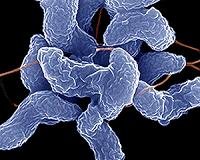| . |  |
. |
Adelaide, Australia (UPI) Nov 11, 2010 One of the world's most endangered birds could become extinct, as a virus threatens its vitally important captive breeding program, Australian researchers say. Orange-bellied parrots, Neophema chrysogaster, have been hit with a stomach virus that causes them to lose their feathers and weakens their immune systems, ScientificAmerican.com reported. Under Australia's Environment Protection and Biodiversity Conservation Act, the orange-bellied parrot was listed as critically endangered in 2006. The species, once common in Australia, has been in decline for the past 100 years as its coastal salt marsh habitat was destroyed for agricultural purposes. About 160 to 170 orange-bellied parrots are in three captive breeding programs, two on the Australian mainland and one on the island of Tasmania. Only about 50 of the birds exist in the wild. The nature of the virus has not been established, although some scientists theorize it could be avian influenza or proventricular dilatation disease, which hampers food digestion. Because the captive parrots live in close proximity to one another, "infections just find it easier to spread from one bird to another," Shane Radial, a veterinary professor at Charles Sturt University, said.
Share This Article With Planet Earth
Related Links Darwin Today At TerraDaily.com
 The Myth Of A Germ-Free World And Antimicrobial Products
The Myth Of A Germ-Free World And Antimicrobial ProductsTempe AZ (SPX) Nov 11, 2010 Killing microorganisms has become a national obsession. A pair of antimicrobial compounds known as triclosan and triclocarban are lately the weapons of choice in our war of attrition against the microbial world. Both chemicals are found in an array of personal care products like antimicrobial soaps, and triclosan also is formulated into everyday items ranging from plastics and toys to articles o ... read more |
|
| The content herein, unless otherwise known to be public domain, are Copyright 1995-2010 - SpaceDaily. AFP and UPI Wire Stories are copyright Agence France-Presse and United Press International. ESA Portal Reports are copyright European Space Agency. All NASA sourced material is public domain. Additional copyrights may apply in whole or part to other bona fide parties. Advertising does not imply endorsement,agreement or approval of any opinions, statements or information provided by SpaceDaily on any Web page published or hosted by SpaceDaily. Privacy Statement |